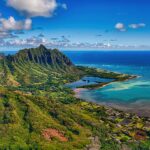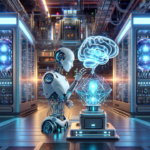Owls, with their captivating appearance and mysterious behavior, have fascinated humans for centuries. These nocturnal birds of prey possess a unique set of characteristics and adaptations that make them exceptional hunters and survivors. In this blog, we will delve into the enchanting world of owls, exploring their anatomy, behavior, habitat, and significance in various cultures.
One of the most striking features of owls is their distinctive appearance. With their large forward-facing eyes, facial disk, and sharp beak, owls have a commanding presence. Their eyes are well-adapted for low-light conditions, allowing them to see clearly in the darkness. Additionally, their ability to rotate their heads up to 270 degrees gives them exceptional flexibility and enables them to scan their surroundings without moving their bodies.
Owls exhibit a wide range of sizes, from the tiny elf owl, which measures around 5 inches (13 cm) tall, to the mighty Eurasian eagle-owl, which can reach a height of over 2 feet (60 cm). Different owl species also display a variety of colors and patterns, ranging from the snowy white plumage of the snowy owl to the mottled brown feathers of the barn owl.
These birds are known for their silent flight, thanks to their specialized feathers. The leading edges of their wings have comb-like structures that break up the airflow, reducing turbulence and noise. This adaptation allows owls to approach their prey stealthily and makes them excellent hunters.
Owls have adapted to various habitats around the world, from dense forests to open grasslands. They can be found on every continent except Antarctica. Different species have specific habitat preferences and ecological roles. For instance, the burrowing owl constructs its nests in underground burrows, while the great horned owl nests in tall trees.
The diet of owls primarily consists of small mammals, such as mice, rats, and voles. They are efficient hunters and possess incredible vision and hearing abilities that help them locate their prey. Owls have a unique adaptation called asymmetrical ear placement, where one ear is higher than the other. This allows them to pinpoint the source of sounds with great precision, even in complete darkness.
Owls are renowned for their distinct vocalizations, commonly known as hoots. These vocalizations serve various purposes, including territorial marking, mating calls, and communication between family members. Each owl species has its own unique hooting pattern, enabling them to identify and communicate with their own kind.
In many cultures, owls hold symbolic meanings and have been associated with wisdom, intelligence, and mystery. They often appear in folklore, mythology, and literature as mystical creatures. The owl’s ability to see in the dark and its enigmatic behavior have inspired stories and legends throughout history.
Conservation efforts are essential to protect owl populations and their habitats. Habitat destruction, climate change, and human activities pose significant threats to these magnificent birds. Organizations and researchers are working to raise awareness, study owl populations, and implement conservation measures to ensure their survival.
In conclusion, owls are captivating creatures that possess remarkable adaptations and play a vital role in ecosystems worldwide. Their unique anatomy, silent flight, exceptional hunting skills, and cultural significance make them an enduring source of fascination. Understanding and appreciating these mysterious birds can inspire us to protect their habitats and appreciate the delicate balance of nature. Owls truly exemplify the beauty and wonder of the animal kingdom, serving as a constant reminder of the rich diversity of life on our planet.



















Add Comment